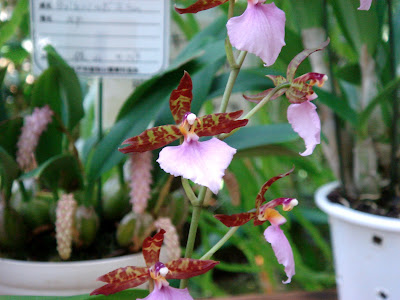Rhynchostele bictoniensis is native to Mexico, Guatemala and El Salvador. In Mexico, these plants are meet in the states of Chiapas and Veracruz...
Rhynchostele bictoniensis also called as Bicton Rhynchostylis (named after the English Village With Large Greenhouse), Amparoa bictoniensis, Cymbiglossum bictoniense, Cyrtochilum bictoniense, Lemboglossum bictoniense, Odontoglossum bictoniense, Oncidium bictoniense, Zygopetalum africanum, is a species of the genus Rhynchostele. This species was described by Soto Arenas & Salazar in 1993.
IDENTIFY RHYNCHOSTELE BICTONIENSIS
Rhynchostele bictoniensis is native to Mexico, Guatemala and El Salvador. In Mexico, these plants are meet in the states of Chiapas and Veracruz, where they grow mainly as terrestrial or lithophytes, in moist mixed forests at an altitude of 1800-2800 m, but sometimes they are found growing epiphytically. In Guatemala, they were found growing as epiphytes, lithophytes and terrestrial, in many places in damp forests at altitudes up to 3200 m. In El Salvador they were found growing ground at 1600-1800 m.
It is a large, cold to cool growing epiphytic or terrestrial species, which reaching 18-50 cm in height, with elliptic, laterally compressed, 6 cm long and 3 cm wide pseudobulbs subtended by 2 to 3, conduplicate, foliaceous bracts and carrying apically a single, elliptic-lanceolate, conduplicate, 11-45 cm long and 1.5-5.5 cm wide leaf.
Bicton Rhynchostylis blooms on a erect, basal, to 11' (30cm) long, simple or few branched inflorescence arising on a newly formed pseudobulb with narrowly elliptic-lanceolate bracts in the winter and spring. The flowers have up to 5 cm in diameter and widely spread, the petals of both whorls are sharp-tipped, elliptic-lanceolate. The flakes of both whorls are pale green or yellowish green with transverse brown or reddish brown stripes. The lip is white, lilac or pink. The surface of the lip spreads rapidly from the short claw at the base to the middle section, and then narrows to a slightly rounded tip to the pointed. The edge of the lip is a bit undulating. The fleshy thickening has high edges and 2 teeth at the apex.
RHYNCHOSTELE BICTONIENSIS CARE AND CULTURE
Cultural information should only be used as a guide, and should be to be adapted to suit you. Your physical location; where you grow your plants, how much time you have to devote to their care, and many other factors, will need to be taken into account. Only then can you decide on the cultural methods that best suit you and your plants.
Light:
Rhynchostele bictoniensis needs a light level of 15000-25000 lux. Medium shade is required.
Temperature:
It is a plant with moderate thermal requirements. The average temperature of the summer day is 20 ° C, night 10 ° C, which gives a daily difference of 10 ° C. The average temperature of the winter day is 17-18 ° C, the night 6-7 ° C, giving a daily difference of 9-12 ° C.
Humidity:
Bicton Rhynchostylis needs the humidity of almost 80% throughout the year, but in winter and spring it drops to 70-75%.
Substrate, growing media and repotting:
Rhynchostele bictoniensis are usually grown in pots which require a loose, airy, fast-drying substrate such as medium fir bark.
Watering:
The plants should be abundantly watered during the growing season from late spring to autumn, but their roots must always dry quickly after watering. In late autumn, the amount of water should be reduced, but the plants can not dry up completely.
Fertilizer:
Weekly use of 1/4-1/2 dose of fertilizers during active growth is recommended. You can use a balanced fertilizer for all year round, or use high nitrogen fertilizer from spring to mid summer, and high phosphoric fertilizer from mid-summer to autumn.
Rest period:
Rhynchostele bictoniensis require a cold, drier winter. Watering in winter should be limited, but the amount of water should be such that the pseudobulbs do not wrinkle. Fertilization should be reduced or eliminated until spring, when normal watering is resumed.















COMMENTS